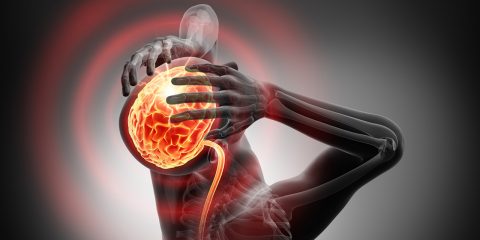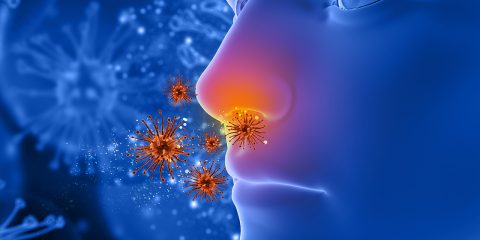You get yet another headache. It hurts a lot, and you just had a headache 3 days ago. You keep continuously getting these terrible headaches. Some doctors say it’s a migraine, some say it’s psychological, ‘just in your head’. You keep thinking ‘why do I have these headaches? Why don’t they go away?
Migraine is a throbbing headache with sensitivity to light and sound, often seen in women and starting in puberty. This throbbing can become unbearable when climbing stairs, walking, or lifting weights. Nausea accompanies the pain in most cases, vomiting is frequent.
A tension type headache is a pain that is felt as if being clamped in the head, occurring in the front and back of the head. Although not as prominent as migraine headaches, light and sound sensitivity can be seen during a tension type headache. Nausea is infrequent, vomiting not expected.
A cervicogenic headache is head pain that starts in the neck spreading upwards due to neck-related problems. Pain around the neck and shoulder muscles, trigger points of these muscles, cervical spine problems, arthritis, hernias, bad posture and cervical lordosis loss or alignment problems can all cause thşs type of pain.
Sometimes a patient can have all three types of headaches. In fact, one pain can trigger the other. And usually neither the patient nor the doctor can distinguish between the types of pain, especially if they follow each other. Stress and bad posture can also trigger all three pains.
Migraine may increase fibromyalgia, postural disorders, and cervicogenic headaches, while cervicogenic pain may increase fibromyalgia and migraine; fibromyalgia and myofascial pain may increase both tension-type headache and migraine.
Migraine is a complex genetic illness. Environmental conditions, diet, and lifestyle factors can all trigger migraines in genetically disposed patients; especially if someone has migraines in the nuclear family. Essentially, if you have a family member with migraines, you are likely to have migraines, but this a possibility, not a fact. Migraine is more common in people who have relatives with migraine or fibromyalgia in their family. We now know that epigenetic changes can be transferred between generations leading to migraine.
Epigenetic changes are genetic information we inherit from the previous generations. These include DNA methylation and histone modifications of the genes. Epigenetic changes modify the expression of critical genes associated with physiologic and pathologic processes, including embryonic development, aging, and carcinogenesis. The epigenetic changes present animals and insects with the inherent environmental knowledge of their ancestors, aiding in survival.
When our grandmother was 4 months pregnant with our mother, eggs begin to form in her ovaries; one of them got fertilized with sperm in the future and as a result we were born. Thus, we shared the same metabolic environment with our mother until we were born, and we were affected by all the metabolic changes that happened in her body. We also went through all the all the stress that she experienced.
All stress/traumas starting from the intrauterine period activate the stress response in the brain and body. If this stress response is too severe or prolonged, it will cause changes in the body's hypothalamic-pituitary-adrenal axis hormone secretion. These hormonal changes/HPA axis changes may contribute to the development of chronic pain disorders, such as migraine, fibromyalgia, irritable bowel syndrome (spastic colitis), and chronic fatigue syndrome.
Hippocrates claims that all illnesses begin in the gut. There are millions of bacteria and single-celled living cells in the gut called the microbiome. These bacteria live in a balance in healthy conditions, and the majority are made up of beneficial bacteria. Causes such as unhealthy diet (western type diet: low fiber, rich in carbohydrates, insufficient vegetable consumption), a sedentary lifestyle, chronic stress, excessive use of pain killers, frequent use of antibiotics, and eating foods that increase intestinal permeability; break this balance and beneficial bacteria are replaced by harmful bacteria. This disruption of microbial balance is called dysbiosis. Dysbiosis can cause a cause or worsen many chronic diseases, depression and chronic pain syndrome symptoms in the long term.
Wheat, barley and rye contain a protein called gluten. Gluten consumption can cause intolerance and allergies in susceptible individuals. Gluten can contribute to leaky gut (increased intestinal permeability) formation and dysbiosis. Gluten also increases the tendency to develop metabolic syndrome. Intolerance, allergies, leaky gut, dysbiosis, depression and weight gain can cause or aggravate migraine, fibromyalgia and chronic pain.
The excessive consumption of processed foods and sodas containing too much sugar (or artificial sweeteners), consuming low amounts of vegetables and nuts, consuming too much coffee, frequent alcohol consumption, and a prolonged use of gastroprotectives, painkillers and diuretics, reduce magnesium levels in the body. Sometimes consuming vegetables may not suffice due to reduced amount of magnesium in vegetables.
A sedentary lifestyle and weight gain increases the symptoms of migraine, fibromyalgia, and chronic fatigue syndrome. Physical activity is very important. Sports such as walking, swimming, cycling, yoga, and Pilates, exercises not harming the joints are especially beneficial. Exercise also helps with weight loss and insulin resistance; and has anti-inflammatory effects, further helping with chronic pain. All of these sports use the two halves of the body symmetrically, thus reducing the likelihood of dementia, depression and pain development through increasing BDNF.
Besides physical activities, yoga, breathing exercises, and meditation are good for all chronic pain by reducing the personal stress, facilitating coping with stress, calming the mind, providing a goo sleep, and correcting bad posture. Apart from all these benefits, yoga contributes to the healing of patients who have a history of adverse childhood events, by laying the groundwork for reconciling with themselves and their past.
Making peace with the past, forgiving the persons who have traumatized you,, stopping resentment towards yourself for faults and failures, showing compassion and understanding to yourself, are other means you can always use to reduce your pain or to maybe completely find cure.
You can reduce your aches and pains by ensuring good sleep patterns, eating magnesium rich foods, embracing an active lifestyle, taking care of your gut, avoiding gluten and sugar, making peace with your past and traumas, and showing self compassion.











